
The caddisflies, or order Trichoptera, are a group of insects with aquatic larvae and terrestrial adults. There are approximately 14,500 described species, most of which can be divided into the suborders Integripalpia and Annulipalpia on the basis of the adult mouthparts. Integripalpian larvae construct a portable casing to protect themselves as they move around looking for food, while Annulipalpian larvae make themselves a fixed retreat in which they remain, waiting for food to come to them. The affinities of the small third suborder Spicipalpia are unclear, and molecular analysis suggests it may not be monophyletic. Also called sedge-flies or rail-flies, the adults are small moth-like insects with two pairs of hairy membranous wings. They are closely related to the Lepidoptera which have scales on their wings; the two orders together form the superorder Amphiesmenoptera.
The Annulipalpia, also known as the "fixed-retreat makers", are a suborder of Trichoptera, the caddisflies. The name of the suborder refers to the flexible terminal segment of the adult maxillary palps, which often has many tiny rings.
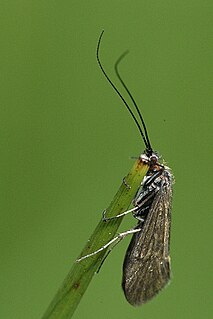
The Hydropsychoidea are a superfamily of caddisflies.

Leptoceroidea is a superfamily of caddisflies.
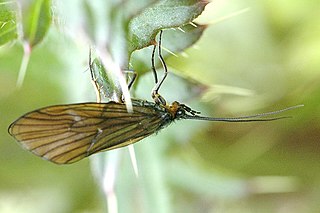
Limnephiloidea is a superfamily of Trichoptera, the caddisflies. Please see the taxonomy details on the right of this page for further details.

The family Leptoceridae are a family of caddisflies often called "long-horned caddisflies". Leptoceridae is the second largest family of caddisflies with more than 1500 species in around 45 genera. The main identifying feature of most Leptoceridae is that their antennae are longer than those of other caddisflies. There is one genus with short antennae (Ceraclea), but it is easily identified by the pair of dark curved lines on the mesonotum.

Limnephilidae is a family of caddisflies with about 100 genera. They belong to the main lineage of case-constructing caddisflies, the Integripalpia or tube-case caddisflies. The Limnephilidae is one of the most species-rich Trichoptera families of northern temperate regions, but only a few are known from tropical areas and the Southern Hemisphere. For this reason they are often known as northern caddisflies.
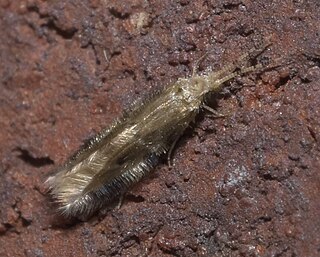
The Hydroptilidae are a large family of caddisflies (Trichoptera) with a worldwide distribution. They are commonly known as microcaddisflies or purse-case caddisflies, in reference to two characteristic traits of this family: Hydroptilidae are much smaller than other caddisflies, rarely exceeding 5 mm (0.20 in) in length. Their larvae do not build a protective case until the final instar of their growth. At that time however, they build a typically Purse-shaped case, either portable or stuck to the substrate, in which the larva finishes growth and pupates.

The Hydropsychidae are a family-level taxon consisting of net-spinning caddisflies. Hydropsychids are common among much of the world's streams, and a few species occupy the shorelines of freshwater lakes. Larvae of the hydropsychids construct nets at the open ends of their dwellings which are responsible for their "net-spinning caddisfly" common name.
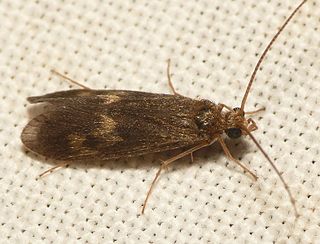
The Polycentropodidae are a family of trumpet-net and tube-making caddisflies. There are at least 30 genera and 720 described species in Polycentropodidae. The type genus for Polycentropodidae is Polycentropus J. Curtis, 1835.
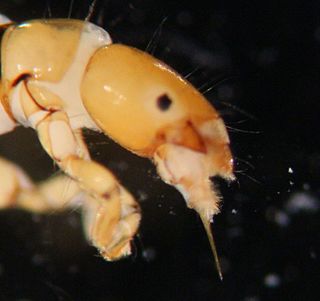
Dipseudopsidae is a family of caddisflies in the order Trichoptera. There are about 6 genera and at least 110 described species in Dipseudopsidae.

Philopotamidae is a family of insects in the order Trichoptera, the caddisflies. They are known commonly as the finger-net caddisflies.
Chathamiidae is a family of case making caddisflies more commonly known as the marine caddisflies. Chathamiids are unique among insects in their invasion of the tide pool environment. Larvae construct their cases of coralline algae. The four described species are distributed along the coasts of New Zealand, New South Wales, and the Chatham Islands.

Limnephilus is a genus of caddisflies in the family Limnephilidae. There are over 180 species of Limnephilus, described between 1824 and 1999.
Dysoneuridae is an extinct family of insect in the order Trichoptera, the caddisflies. The family was first described by I.D. Sukacheva in 1968, and lived in the Mesozoic era between 164.7 mya to 125.45 mya. Members of this family lived in lagoons, ponds, and terrestrial habitats.

Uenoidae is a family of stonecase caddisflies in the order Trichoptera. There are about 7 genera and at least 80 described species in Uenoidae.

Limnephilini is a tribe of northern caddisflies in the family Limnephilidae. There are about 16 genera and at least 300 described species in Limnephilini.

Lepidostoma is a genus of bizarre caddisflies in the family Lepidostomatidae. There are more than 150 described species in Lepidostoma.
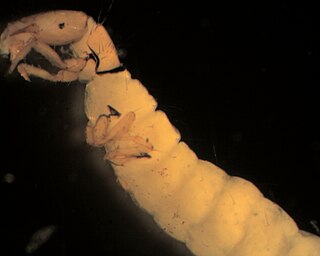
Wormaldia is a genus of fingernet caddisflies in the family Philopotamidae. There are more than 140 described species in Wormaldia.
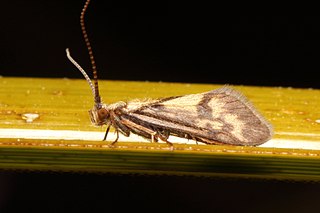
Conoesucidae is a family of caddisflies in the order Trichoptera. There are about 12 genera and more than 40 described species in Conoesucidae.
















